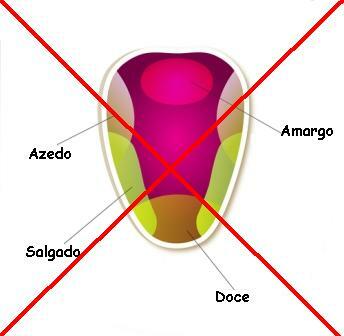O taste it is the sense that allows us to taste food. It is through this that we know that ice cream is sweet, steak is salty, lemon is sour, and so on.
We define flavor as a mixture of sensations: taste, smell and consistency. With the sense of taste, we are able to distinguish four basic flavors: bitter, sour, sweet and salty. There is also a fifth flavor, which is known as umami, however, this taste is only observed in foods that contain monosodium glutamate (spices, for example).
Taste is perceived by us thanks to the so-called taste buds. In these papillae are located a large number of sensory cells capable of capturing information about the taste of food. They are mainly located on the upper tongue and palate, however they can be found in other regions. Sensory cells capture different tastes thanks to chemical substances present in food and, therefore, they are also called chemoreceptors.
The papillae are classified into four types: circumvallate, fungiform, foliaceous and filiform. Only the filiform papillae are not able to capture tastes, being related to sensations regarding the texture of the food.

For many years, it was believed that flavors were perceived in different areas of the tongue. Today this is no longer accepted
For a long time it was believed that there were specific regions in the language to taste certain foods. It was believed, for example, that sweet was felt on the tip of the tongue, while bitter only in the posterior region of the tongue. Today it is known that this is not true, although many authors still present this division in their work. We now know that receptors for different flavors are randomly distributed throughout the tongue, not being predominantly located in a single area.
An interesting characteristic of the palate concerns the hot and cold. The temperature of the food may make you perceive it differently. It is believed that higher temperatures are related to the sensation of sweetness, while lower temperatures resemble acidic and salty flavors. This means that the hotter a food is, the sweeter it will look. Therefore, a chocolate at room temperature is interpreted as sweeter than one stored in the fridge.
by Vanessa dos Santos
Graduated in Biology
Take the opportunity to check out our video lesson on the subject:



